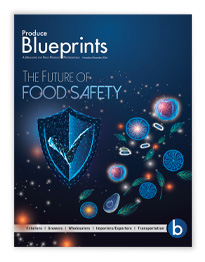So what does the future of foodservice look like?
For many, it’s already here; for others, it’s just trying to stay ahead of negatives like higher prices, supply issues, and labor to keep the doors open.
Our contributors all agree foodservice operators must unite creativity with flexibility to provide consumers with what they want—which, of course, keeps changing.
Most everyone continues to dine outside the home, but many are looking for deals or value. For those cutting back, they’re open to fresh-cut items and easy meal prep, and there’s a willingness to try new things.
Melodie Beal, head of culinary development for Amazon Fresh BB #:283186, sees an opportunity in promoting obscure fruits and vegetables, or unusual pairings. “Along the lines of helping our customers shop and cook easier, I’m seeing a great trend of lesser-known, value-added vegetables.
“I love seeing various vegetable forms like jicama wraps, kohlrabi slaw, or romanesco florets, especially in smaller portions or promotionally priced, to make it easier for customers to ‘just try it’ at a low risk cost.
“We can further help with samples in stores, recipes on packs, and merchandising next to recommended pairings,” she adds.
Another creative endeavor is having “vegetable concierges” or “vegetable butchers,” Beal says, “which are attended counters in the produce department where customers can bring their vegetables from the shelf to be prepped for them.
“What a smart way to have a value-added product for your customers without tapping into shelf life concerns, since everything’s being cut á la minute!”
According to Technomic and other research, consumers are still seeking local ingredients and transparency about how they’re produced and prepared.
Jill Overdorf, longtime marketing guru and founder of The Produce Ambassador in Torrance, CA, notes that marketing messages should highlight how products are grown rather than the item itself, with an emphasis on things like regenerative and sustainable processes.
She points out that these terms can often be somewhat ambiguous, but that there are legitimate sustainability stories that can be emphasized. “People care,” says Overdorf.
“Chefs are also more aware of what they’re buying and where it comes from,” she adds, explaining that it’s important for the produce industry to provide continued education to foodservice buyers about seasonality, sourcing, packaging, value, and so on.
“Sometimes it’s taken for granted that people know what you’re selling, but they don’t.”
This is an excerpt from the feature story of the July-August issue of Produce Blueprints Magazine. To read the whole issue, click here.



